Abstract
The possible role of the indigenous intestinal microflora in the toxicoinfection of human infant botulism was studied with adult germfree mice. Intraintestinal botulinum monoassociation was consistently produced when mice were fed 10 C. botulinum type A spores. Control germfree mice became enterically infected when placed in the same isolator with, but separated from, animals that had been fed spores. When transferred into a room holding a colony of normal mice, the highly susceptible gnotobiotes became resistant to challenge of 10(5) spores after about 3 days of the conventionalizing exposure. The findings are interpreted as evidence that enteric botulinum infection occurs in human infants whose intestinal tract has not yet been colonized by bacteria which are indigenous to adults and prevent growth of C. botulinum. Intestinal monoassociation could not be developed in germfree infant mice younger than 7 days.
Full text
PDF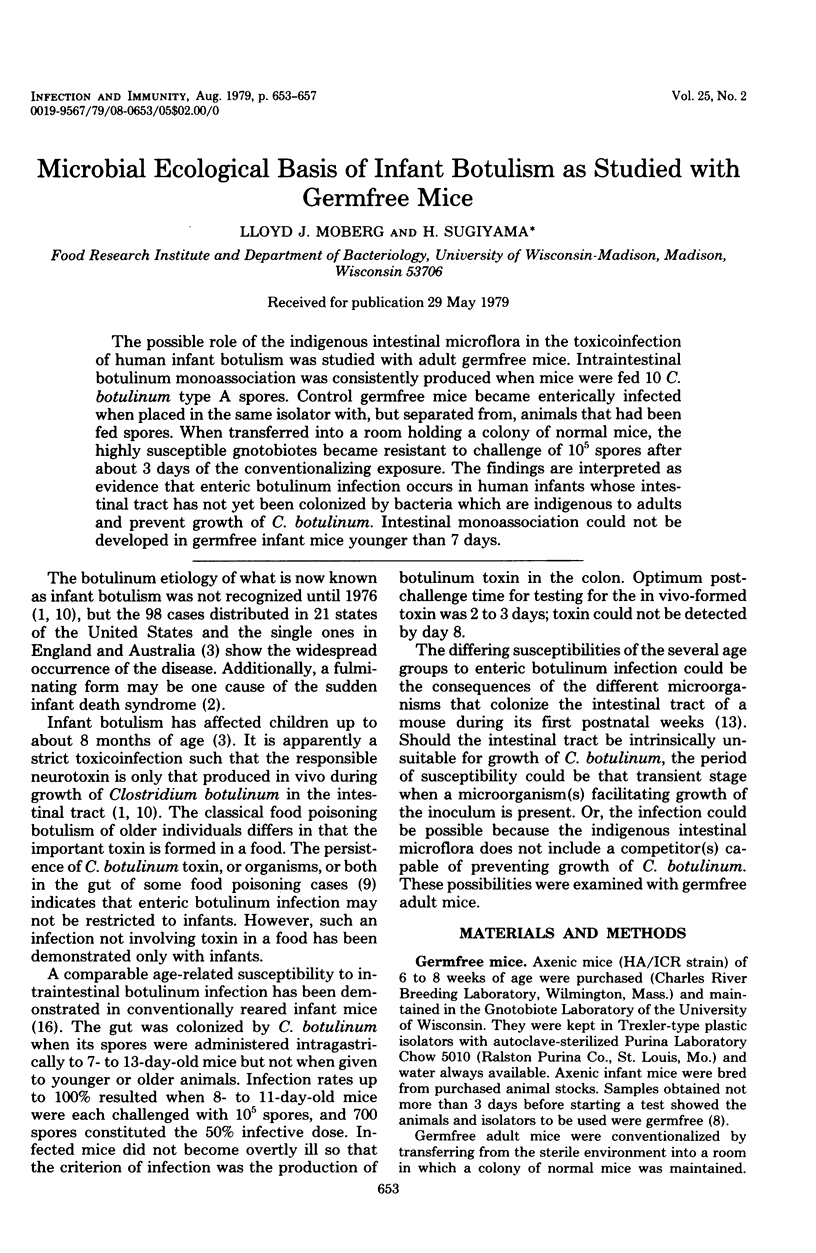
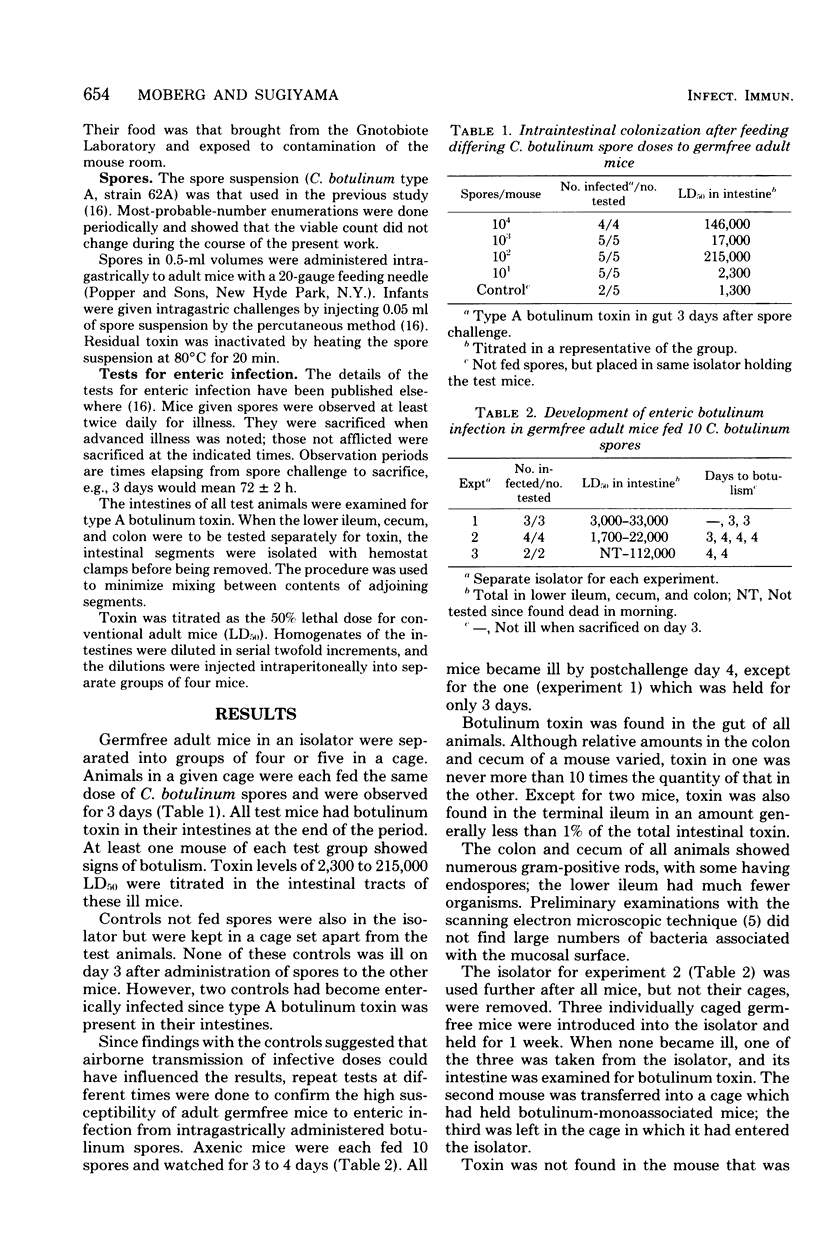
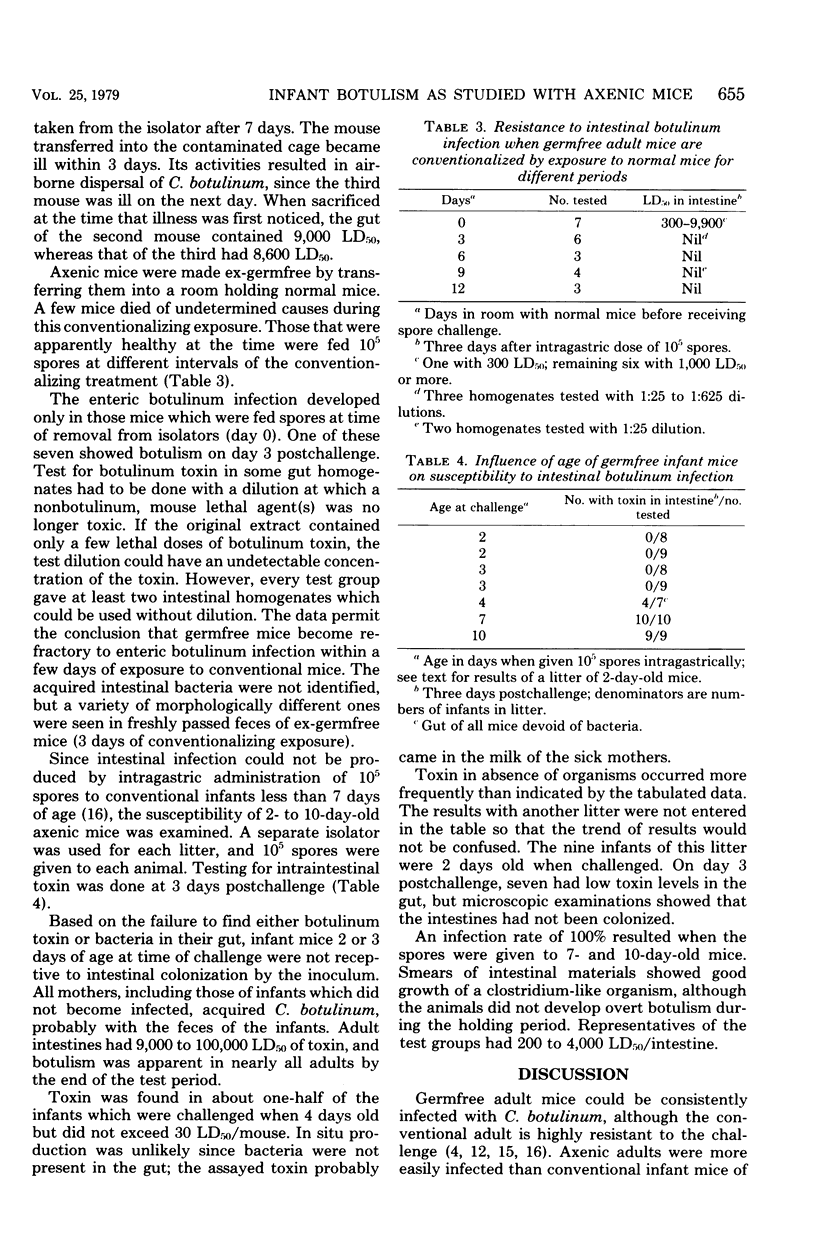
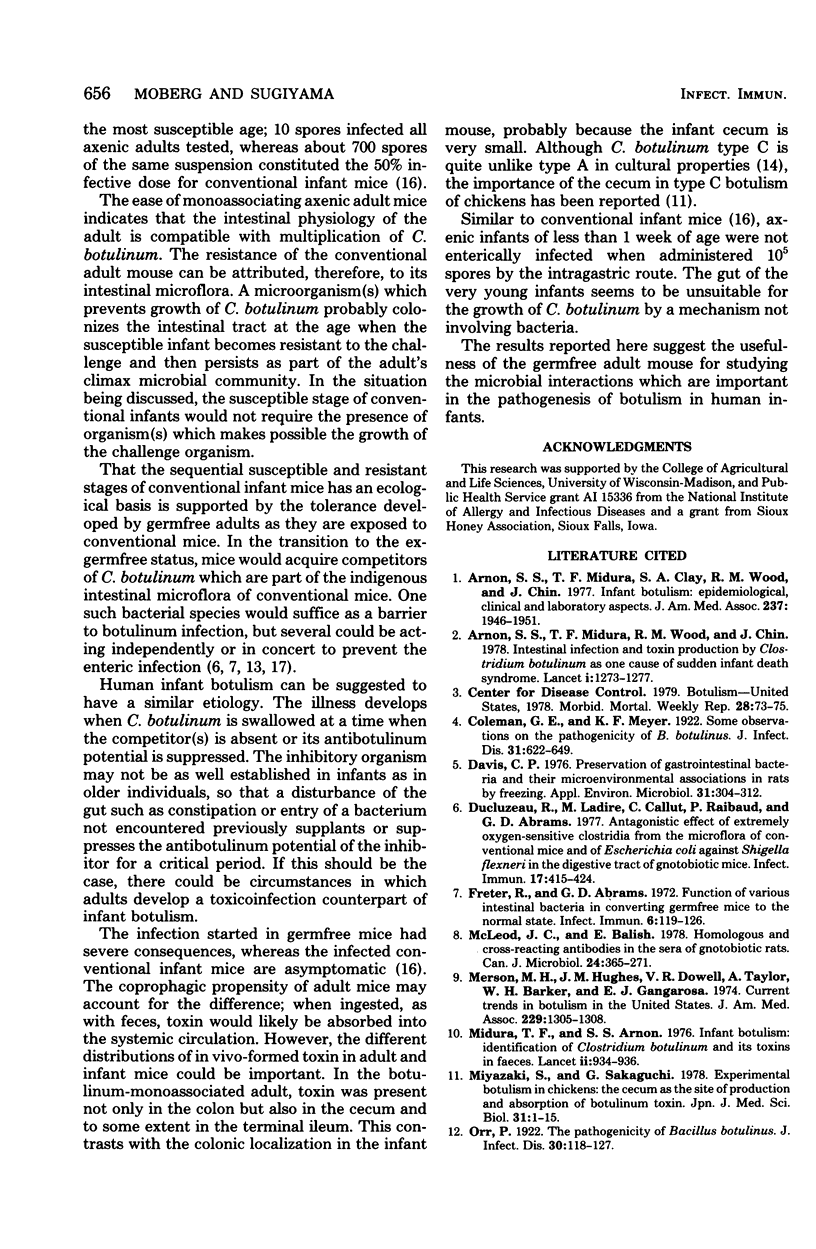
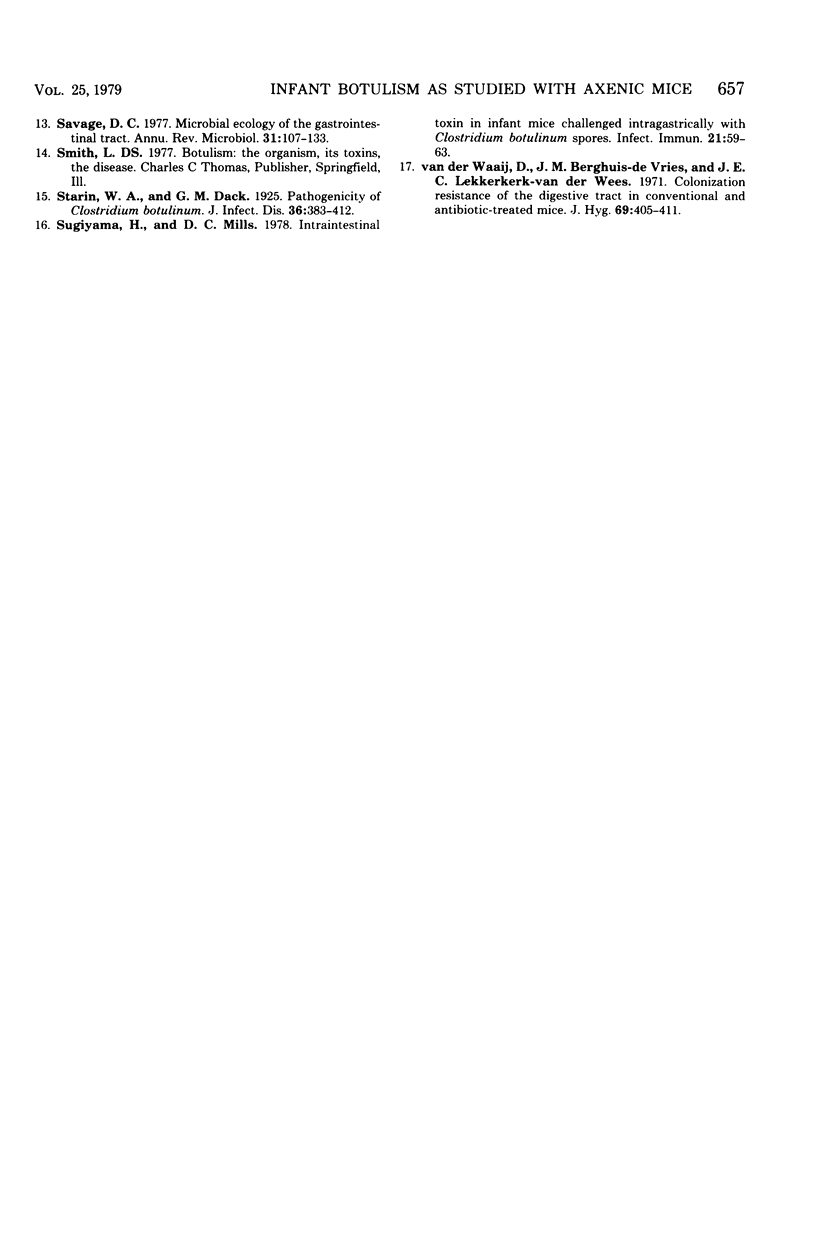
Selected References
These references are in PubMed. This may not be the complete list of references from this article.
- Arnon S. S., Midura T. F., Clay S. A., Wood R. M., Chin J. Infant botulism. Epidemiological, clinical, and laboratory aspects. JAMA. 1977 May 2;237(18):1946–1951. doi: 10.1001/jama.237.18.1946. [DOI] [PubMed] [Google Scholar]
- Arnon S. S., Midura T. F., Damus K., Wood R. M., Chin J. Intestinal infection and toxin production by Clostridium botulinum as one cause of sudden infant death syndrome. Lancet. 1978 Jun 17;1(8077):1273–1277. doi: 10.1016/s0140-6736(78)91264-3. [DOI] [PubMed] [Google Scholar]
- Davis C. P. Preservation of gastrointestinal bacteria and their microenvironmental associations in rats by freezing. Appl Environ Microbiol. 1976 Feb;31(2):304–312. doi: 10.1128/aem.31.2.304-312.1976. [DOI] [PMC free article] [PubMed] [Google Scholar]
- Ducluzeau R., Ladire M., Callut C., Raibaud P., Abrams G. D. Antagonistic effect of extremely oxygen-sensitive clostridia from the microflora of conventional mice and of Escherichia coli against Shigella flexneri in the digestive tract of gnotobiotic mice. Infect Immun. 1977 Aug;17(2):415–424. doi: 10.1128/iai.17.2.415-424.1977. [DOI] [PMC free article] [PubMed] [Google Scholar]
- Freter R., Abrams G. D. Function of various intestinal bacteria in converting germfree mice to the normal state. Infect Immun. 1972 Aug;6(2):119–126. doi: 10.1128/iai.6.2.119-126.1972. [DOI] [PMC free article] [PubMed] [Google Scholar]
- McLeod J. C., Balish E. Homologous and cross-reacting antibodies in the sera of gnotobiotic rats. Can J Microbiol. 1978 Apr;24(4):365–371. doi: 10.1139/m78-062. [DOI] [PubMed] [Google Scholar]
- Merson M. H., Hughes J. M., Dowell V. R., Taylor A., Barker W. H., Gangarosa E. J. Current trends in botulism in the United States. JAMA. 1974 Sep 2;229(10):1305–1308. [PubMed] [Google Scholar]
- Midura T. F., Arnon S. S. Infant botulism. Identification of Clostridium botulinum and its toxins in faeces. Lancet. 1976 Oct 30;2(7992):934–936. doi: 10.1016/s0140-6736(76)90894-1. [DOI] [PubMed] [Google Scholar]
- Miyazaki S., Sakaguchi G. Experimental botulism in chickens: the cecum as the site of production and absorption of botulinum toxin. Jpn J Med Sci Biol. 1978 Feb;31(1):1–15. doi: 10.7883/yoken1952.31.1. [DOI] [PubMed] [Google Scholar]
- Savage D. C. Microbial ecology of the gastrointestinal tract. Annu Rev Microbiol. 1977;31:107–133. doi: 10.1146/annurev.mi.31.100177.000543. [DOI] [PubMed] [Google Scholar]
- Sugiyama H., Mills D. C. Intraintestinal toxin in infant mice challenged intragastrically with Clostridium botulinum spores. Infect Immun. 1978 Jul;21(1):59–63. doi: 10.1128/iai.21.1.59-63.1978. [DOI] [PMC free article] [PubMed] [Google Scholar]
- van der Waaij D., Berghuis-de Vries J. M., Lekkerkerk Lekkerkerk-v Colonization resistance of the digestive tract in conventional and antibiotic-treated mice. J Hyg (Lond) 1971 Sep;69(3):405–411. doi: 10.1017/s0022172400021653. [DOI] [PMC free article] [PubMed] [Google Scholar]


